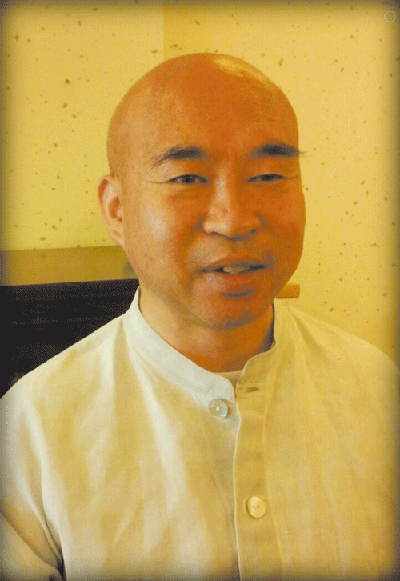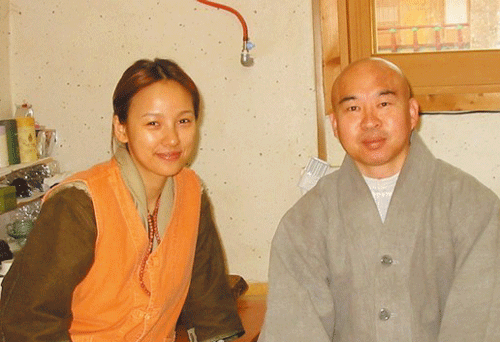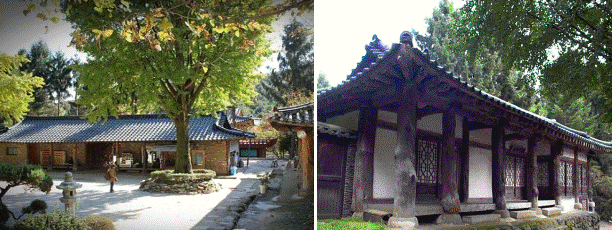Has a 1000-year history, fought against Hideyoshi invaders
When you feel you need a rest, mentally and physically, you leave for a natural environment like a baby groping its mother’s bosom. There is a Buddhist temple surrounded by nature which is only half an hour away from the heart of Seoul.
As it is almost always the case with a temple, you come across it when you take a walk along a mountain trail and more often than not you find valleys that are well known since the Joseon Dynasty. The people in those days would have removed their footwear, put their feet in the water that trickled along the bottom of the valley, and got lost in the comfortable surroundings of the fresh air of the summer.

The temple was called Myojeok- sa and the name attracts the people’s attention. A trekking trail continues from the temple on the left-hand side. There is a saying, “The richest person is he who has the benefit of appropriative scenery.”
Instantly, I feel as if I were a rich person.
Myojeok-sa, located in Nam- yangju-si on the eastern suburbs of Seoul, is a very old temple that was built by the famed Korean monk, Wonhyo, during the rule of King Munmu (626-681) of the Silla Dynasty and grand Buddhist rituals took place at this temple during the rule of King Sejong (1386-1450) of the Joseon Dynasty.
There are stories indicating that the King did not have full trust in the regular army troops and therefore had a secret military organization in the temple where youths were recruited to become monks and were given intensive martial training in addition to Buddhist teachings.
The first building that comes into view is a new one built for the accommodation of visitors who come for temple stay where a quick look around makes one feel develop a liking even if one is not a Buddhist believer.

Behind the building stood a male ginko tree and a female one each looking several hundred years old and majestic. As you enter the temple perimeters, you come across trees each measuring more than both arms’ span around, which add to the beautiful backdrop of the temple buildings.
Go around to the backyard and you come across a separate building named Maha Zen House which is an auxiliary structure built with gnarled wood. This is where monks used to enjoy their break time in the past. One becomes inclined to have a meeting with the monks of the olden times.
I returned to the Main Daeung-jeon Building where Chief Abbot Rev. Haesong of the Temple received me warmly.
The room was devoid of any sign of luxury and my interview with the chief abbot took place over a cup of Puer tea. It was a very quiet place where you could even hear the sounds of the natural surroundings. Here are the questions and answers:
Historically, the kings in the early period of the Joseon Dynasty appear to have minded their personal security and safety. There were power struggles and King Sejong was no exception because he was not the first son of his father. There were factions that attempted a rebellion and therefore he wanted to have a loyal group of warriors--just like King Jeongjo operated the Jangyong Camp. In the case of King Sejong, too, he did not feel very safe even though his father (King Taejong) had eliminated the influence of the in-laws and Prince Yangnyeong. This is why King Sejong chose Myojeok-sa Temple as one of the places where he kept his loyal warriors separate from the regular army troops.

Q: You might have heard of the popular movie named Myeongnyang, which attracted over 10 million viewers, which featured the Japanese Hideyoshi Invasion of Korea in the late 16th century. I hear that this temple greatly contributed to resisting the Japanese invaders.
A: You should be aware of General Hyujeong (AKA Great Master Seosan [1520-1604]) who was born in the 15th year of King Jungjong of the Joseon Dynasty and lived until the 37th year of King Seonjo and also of Yujeong, the Great Master Samyeong. Yujeong is better known as Great Master Samyeong (1544-1610).
Yujeong fought against the Japanese invaders under the command of Hyujeong. Yujeong recruited and trained monk soldiers at this temple. Due to this, the Japanese troops burnt down the temple buildings.
Q: How brave the monks and how sad the destroyed temple buildings! I am simply convinced that this is a great temple. I hear that you have a treasured cultural property designated by the government.
A: Yes, it is the Seven-storied Octagonal Pavilion, which was designated as Local Relic Number 1 of the Myojeok-sa Temple of the Namyangju City. The designation came after a series of investigations conducted by the Government of the Gyeonggi Province for the unregistered cultural relics from 2011.

Q: You mean the multi-story pagoda standing in front of the Main Daeungjeon building? Congratulations. I learned that you are operating a temple stay program. Can you introduce the program?
A: Yes. We started it with the notion that the temple stayers should be provided with the most comfortable accommodation. The temple stay program differs from one temple to another, but the basic program consists of joining the Zen rite, talk with a monk over a cup of tea, meals in wooden bowls and 108 bowings. However, the program is implemented flexibly to meet the requirements and convenience of the temple stayers.
Q: I, too, stayed at a temple on a number of occasions while a university student. After getting a job, it is difficult to do it although I very much wish to do so. I hear that many popular actors and actresses have stayed at this temple. Can you tell me who they were?
A: Yes, a quite a number of them have visited our temple. They include Actress Lee Hyo-ri and Gagwoman Kim Shin-young.
Q: I hear that you have children staying here at the request of their parents.
A: Yes, we invited children from the Local Children’s Center of the Pyeongtaek City to stay at our temple. It was a time we spent with them to soothe and heal the troubled minds of the children who might have had hurt feelings. Monks and nuns here developed affection for the children and it was a really reluctant parting when they had to leave. Some of them are staying with us at the request of their parents. We are keeping them with us until they are ready to return home and to society.

Q: I also hear that you are working on a special program for multi-cultural families.
A: Of the total number of expatriates in Korea, some 31 percent are living in Gyeonggi Province. Also, the number of children of the multi-cultural families are increasing by 6,000 each year. I hear that they have difficulty in acclimatization with Korean society in various aspects, eg, language barrier, home environment, racial prejudice and culture shocks. Many of them are having difficulty in adapting themselves also to the school environment. We have a program for such students where their parents can also join. I got a lot of feedback from our experience gained in the process of accommodating the temple stayers. Even among us who use the same language we often experience difficulty in communication. The children who have a different language have a greater deal of difficulties.
Q: I agree with you 100%, Your Reverend. It’s a great program. Do you have anything more to say? If not, I would call it interview. Thank you for your time and I hope to stay at your temple one night in October--with your permission.
The monk smiled sweetly and I thought it was more than a sign of approval. Shortly before I started off, he asked me if I was doing OK. I just smiled back telling myself I would answer the question when I come back here and meet him again--by when the autumn would be by no means young with the yellow leaves of the ginko trees having fallen on all over the ground in some thickness as well as on the tiled roofs.

By Regina Han

